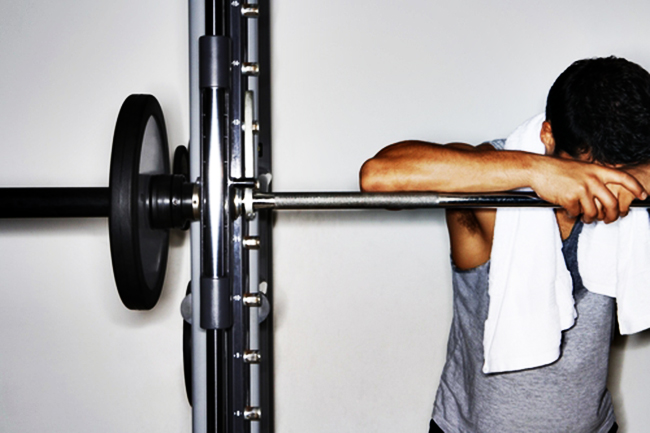What is recovery and why is it so important?
How much time do you spend in the gym (or working to physically improve your body)?
Probably not much. Well, at least compared with the amount of time you spend between those sessions.
Gym time is simply a stimulus for change. This stimulus will only create results if we recover enough between workouts. The quicker and more efficiently we can recover, the sooner we can spur further progress.
When someone doesn’t recover adequately, performance and health may suffer. Many athletes describe it as “hitting a wall.” Many exercisers refer to it as “overtraining.” It usually means low energy and an overall sensation of not feeling quite right. Fatigue occurs because recovery wasn’t adequate.
If we looked at someone’s insides, we might also see that their markers of inflammation are elevated. We might see that their connective tissues aren’t healing. We might see their happy neurotransmitters and anabolic hormones going down and their catabolic hormones such as cortisol going up.
In short, lack of recovery is a complex, multi-faceted phenomenon with wide-ranging effects.
The underlying causes of fatigue fall into two main categories:
- Central (neuromuscular)
- Local (peripheral)
Our central nervous system (CNS) acts like a car engine regulator. If the engine on a car revs too high for too long, it shuts down. Our brain attempts to protect our muscles the same way. It will reduce the rate of nerve impulses.
Conversely, local fatigue is related to energy system depletion and/or metabolic byproduct accumulation. Using our car analogy, this is sort of like running out of gas or rusting.

What you should know about recovery
We can do lots of activities between workouts. The ones we ultimately choose greatly influence how efficiently we recoup. We can place all of our “out of gym” activities into two main categories:
- Sympathetic activities – often referred to as “fight or flight”
- Parasympathetic activities – often referred to as “rest and digest”

Pursuing ambitious career goals, building relationships, balancing finances, acquiring food, acquiring shelter, and all of the daily activities required for human survival are sympathetic activities.
They are stressors and can bump up levels of cortisol and adrenaline.
When we get wrapped up in these activities and let them dominate our life, it can result in:
- Poor blood sugar management and insulin resistance
- Depression, sleep disruption, and carbohydrate craving
- Decreased thyroid hormone output and a reduced metabolism
- Altered sex hormone activity
- Amino acid loss from muscle
If this is chronic, production of stress hormones can slow and the development of ongoing fatigue could occur. This type of fatigue is central, or neuromuscular. The body has been revving too high for too long and it’s shutting down.
Now, removing all stressors from life might sound appealing, but it isn’t a positive thing. Rather than eliminating stress, balancing stressful activities with relaxing and energizing activities is the key.
Relaxing and energizing activities are parasympathetic dominant. These include:
- Meditation
- Yoga
- Pilates
- Tai chi
- Spa treatments
- Meaningful relationships/discussions
- Jacuzzi time
- Sauna
- Relaxing hobbies
- Reading
- Music
- Drinking tea
- Daydreaming
- Warm baths
- Candles
- Aromatherapy
Meditation, yoga, pilates and tai chi can help to lower stress, improve oxygenation and stimulate recovery. They’ve been around for thousands of years because they work. Spa treatments, sauna time and baths can facilitate lymph circulation and recovery.
Sleep and meaningful relationships can also regulate our recovery. A restful sleep and a good laugh are like a carnival for energizing and recovery hormones. And everyone likes the carnival.
Most people need 7 to 9 hours of restful sleep each night to perform their best. See All About Sleep for more. If your sleep has tanked, you may be overtraining.
One activity isn’t necessarily better than another; it’s more about what the specific activity does for you. Remember, the immune system is working overtime between exercise bouts as it tries to bring things back into balance. The least you can do is nudge it along.
Prioritizing 30 minutes of parasympathetic activity each day is essential for productive recovery.

Nutrition
Real food
On the nutrition front, eating real food in its unprocessed form will give your body the nutrients it needs. We cover this in depth throughout Precision Nutrition v4. Consuming whole foods along with herbs and spices can help to moderate inflammation, assisting in recovery.
Caloric intake
Avoid lowering calories below 1500 per day when training more than 7 hours each week.
Appetite
Appetite can clue you in on your recovery status as well. If you can’t imagine eating more than a couple pieces of fruit each day OR feel like a bottomless food pit, you may be overtraining.
Water
And don’t neglect hydration. Plenty of fluids can be important for lymphatic function.
Supplementation
Supplements after training can enhance the recovery process. These include carbohydrates, protein and BCAAs. See AA Carbohydrates, AA Protein, and AA BCAAs for more. If recovery supplements or a nutrient dense meal aren’t in place after workouts, the regeneration process can be delayed. Glutamine and creatine might also be of use for recovery. See AA Glutamine and AA Creatine for more.
Phosphatidylserine is one of the few supplements that might help to control stress levels, see this article for more.
Avoid unnecessary anti-inflammatory medications, prescription or over the counter (e.g., NSAIDs). While we don’t want chronic inflammation, we do want inflammation to happen in the initial stages after trauma. When we suppress inflammation, we may also forfeit the recovery process long-term.
Workouts
Variation and cross-training
If we don’t cross train and vary workouts, specific muscles and energy systems may not fully recover. Think of a hard core marathoner or muscle head, always doing the same program until they burn out or get injured (or both).
If you do intense intervals and then intense resistance training, day after day, you can tax your anaerobic system. This is one of the reasons lower intensity cardio is so popular between resistance training sessions for strength and physique athletes.
If you do endurance cycling and running day after day, you’ll tax your oxidative system, moreover, nutrient stores will likely go un-replenished.
Those are both examples of local fatigue, with depleted energy systems and metabolic waste product accumulation.
Starting the recovery process
After each stressful workout, we must repair damaged tissues and cells while replenishing nutrient stores and removing wastes.
Engaging in an adequate warm-up, mobility work, a cool-down, and plenty of flexibility work will assist in the recovery process. Think of it as pre-hab.
Improving and ensuring good circulation is an important part of this. Blood brings new oxygen and nutrients while removing wastes. Lymphatic circulation sends white blood cells to do their job while tidying messes left behind.
Exercise and immunity
The relationship between exercise and immunity is what researchers call a “J-shaped curve”.
- Sedentary people have a moderate risk of infection. Their immune system isn’t running as well as it could be.
- People who are regularly active, but moderate their intensity and vary their training, do better than the sedentary people. They’re the healthiest bunch.
- People who are active but constantly pushing their limits — whether that’s workout frequency, duration, intensity, or loading — without proper recovery start to become sicker and sicker the more they crank up the difficulty. In extreme cases, they can end up with a serious infection such as pneumonia.

Overtraining/Under-recovering
People often talk about “overtraining”, but in reality what they mean is “under-recovering”.
You may be overtraining if:
- Your muscles are always sore
- The idea of going to the gym makes you feel depressed or anxious
- In fact you feel more depressed and anxious overall, with a side order of crabby
- You aren’t sleeping well — or can’t stop sleeping
- You have no appetite or a ravenous appetite
- Everything hurts, all the time
- You seem to come down with every darn virus going around
- Your gym performance has been slumping — either seriously stagnating or getting worse
One objective indicator of overtraining/under-recovering is elevated morning heart rate. If you’re concerned, take your pulse before you get out of bed one morning. Here’s one handy test.
You can also do a couple of other home tests to pinpoint adrenal fatigue, which often also signals overtraining/under-recovering.
Summary and recommendations
- Prioritize 30 minutes of parasympathetic activity each day (e.g., yoga, meditation, massage, warm bath, Jacuzzi, light conversation, laughing, etc.)
- Don’t lower calorie intake below 1500 when training more than 7 hours a week
- Use a carbohydrate, protein, or BCAA supplement after training
- Consider using creatine, glutamine, and/or phosphatidylserine
- Avoid using anti-inflammatory medications on a regular basis
- Eat nutrient dense foods at regular intervals, incorporate herbs and spices, and drink water and tea whenever you are thirsty
- Vary your training program and cross-train
- Participate in low intensity exercise between higher intensity bouts to promote recovery (e.g., yoga, walking, swimming, stretching, mobility work, etc.)
- Aim for 7-9 hours of restful sleep each night
Eat, move, and live… better.©
Yep, we know… the health and fitness world can sometimes be a confusing place. But it doesn’t have to be.
Let us help you make sense of it all with this free special report.
In it you’ll learn the best eating, exercise, and lifestyle strategies — unique and personal — for you.
Click here to download the special report, for free.
Further resources
Research Review: Nutrition and Exercise Recovery – Part 1
Research Review: Nutrition and Exercise Recovery – Part 2
References
Click here to view the information sources referenced in this article.




Share